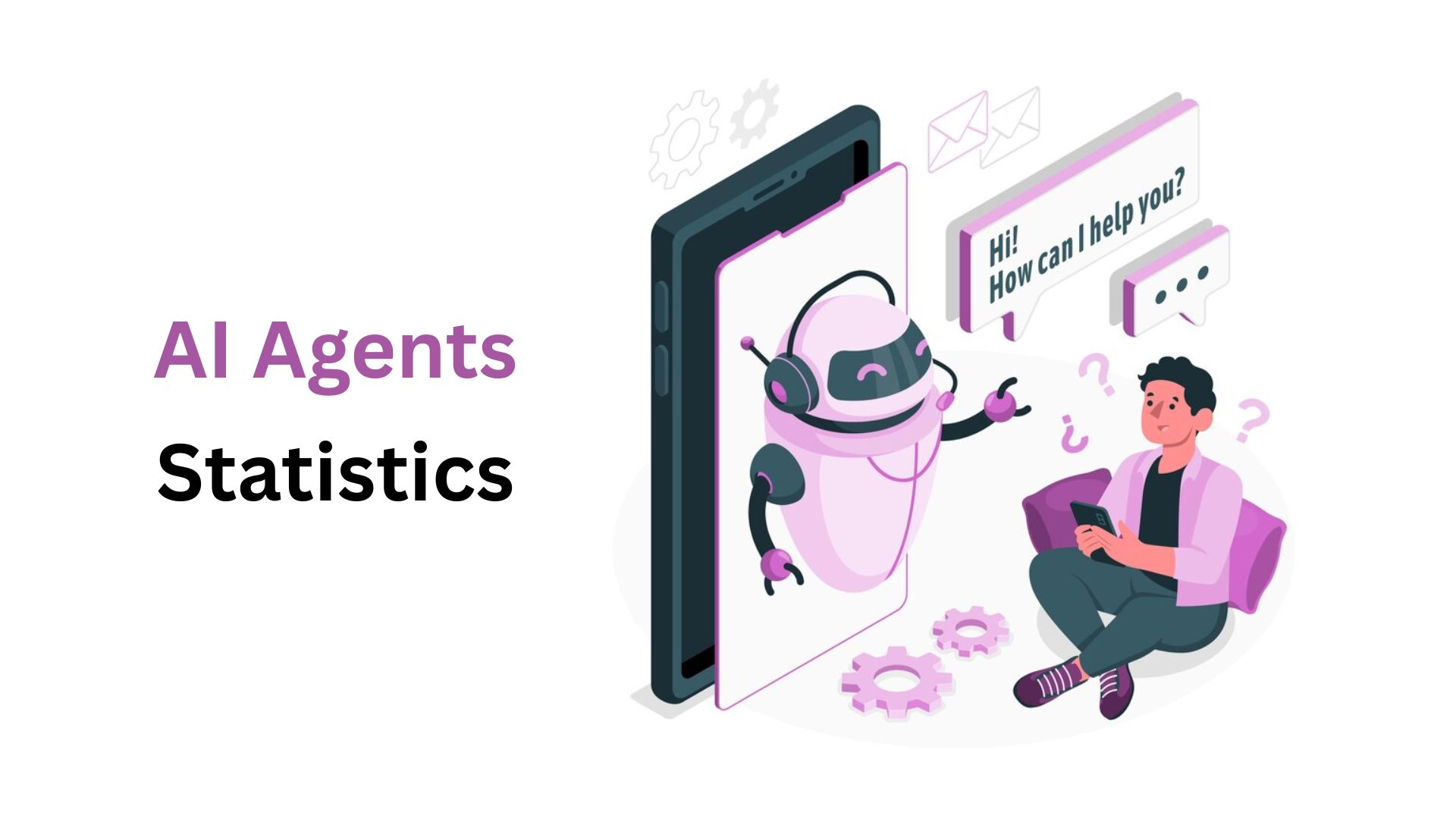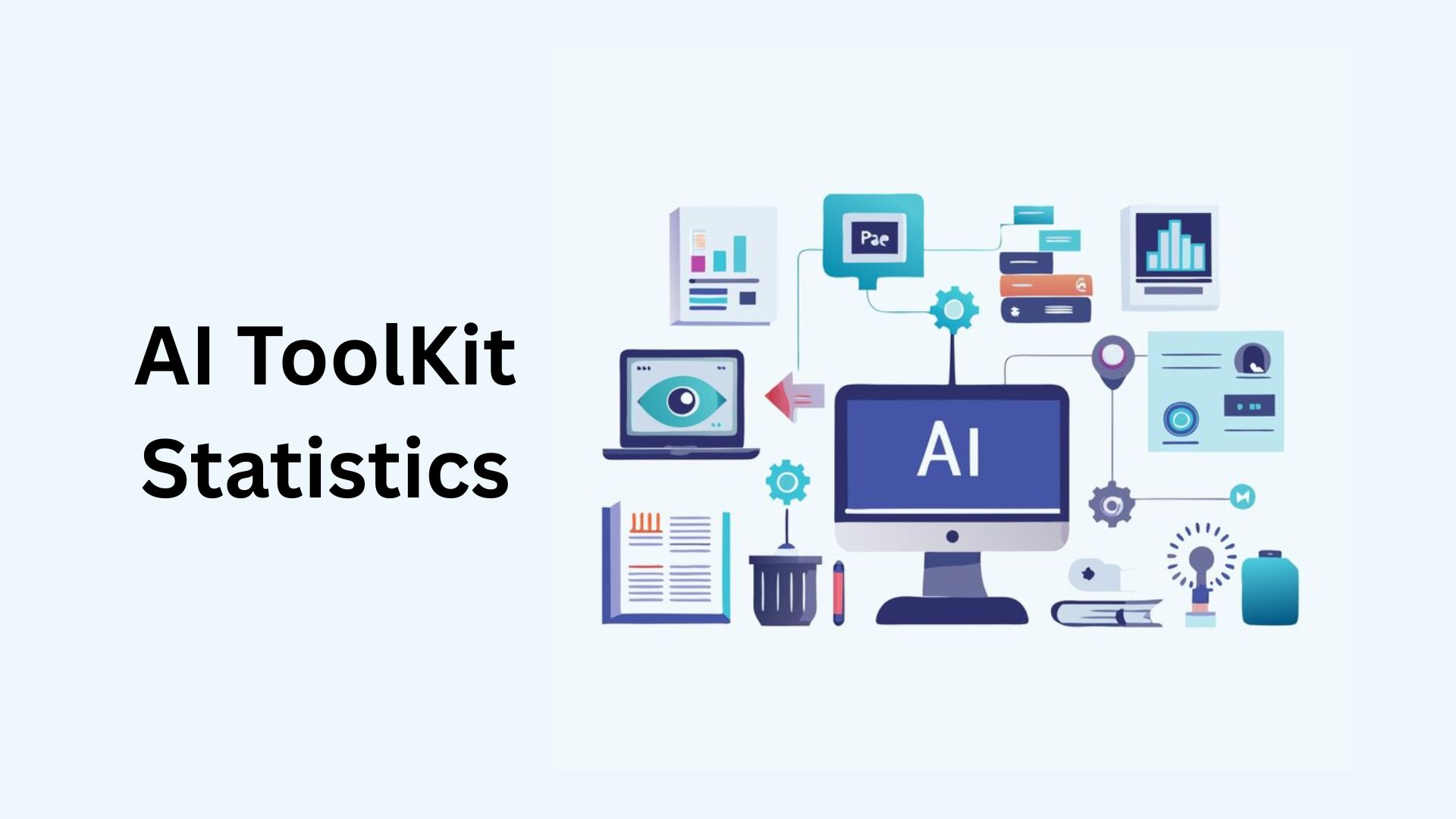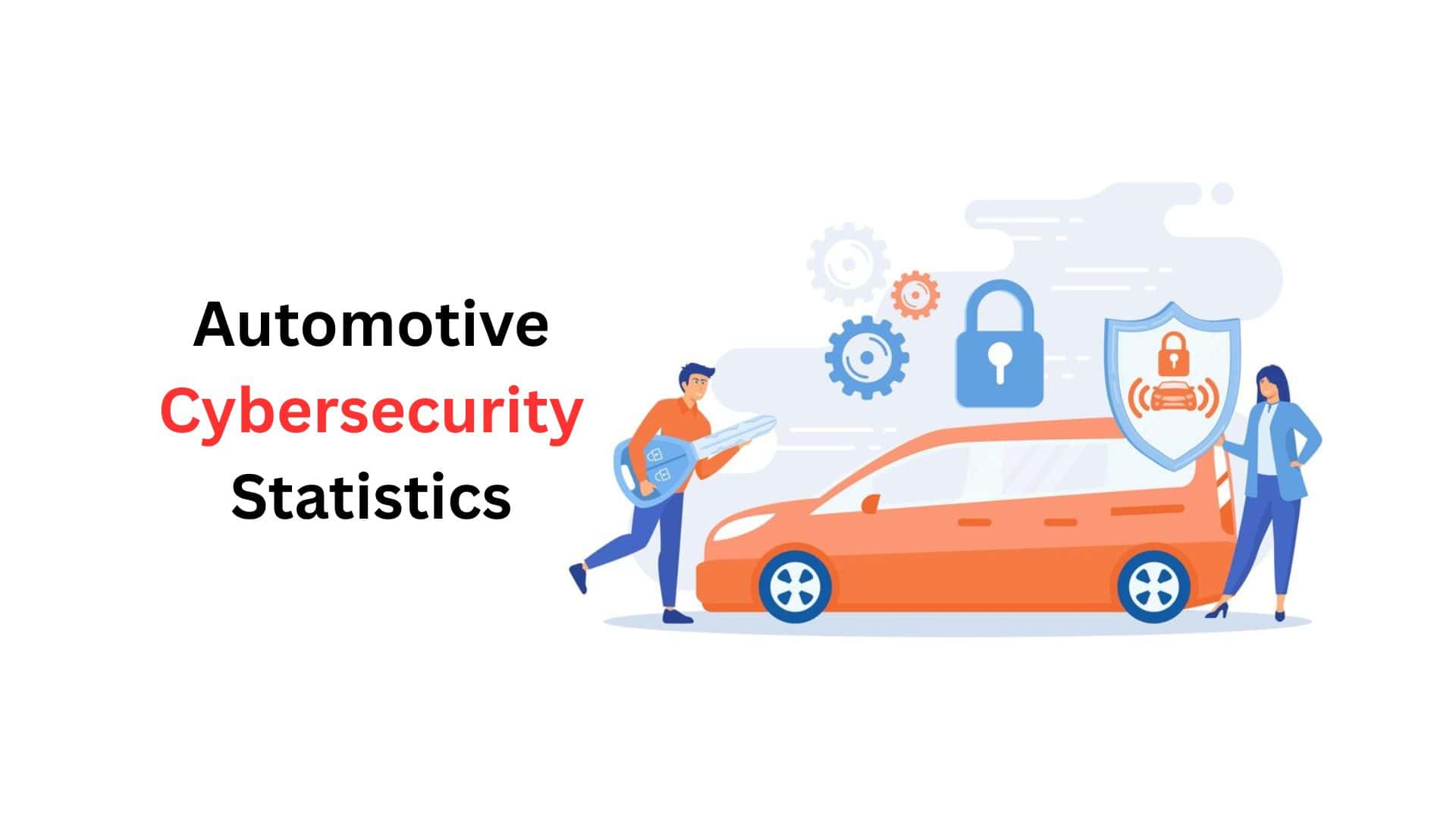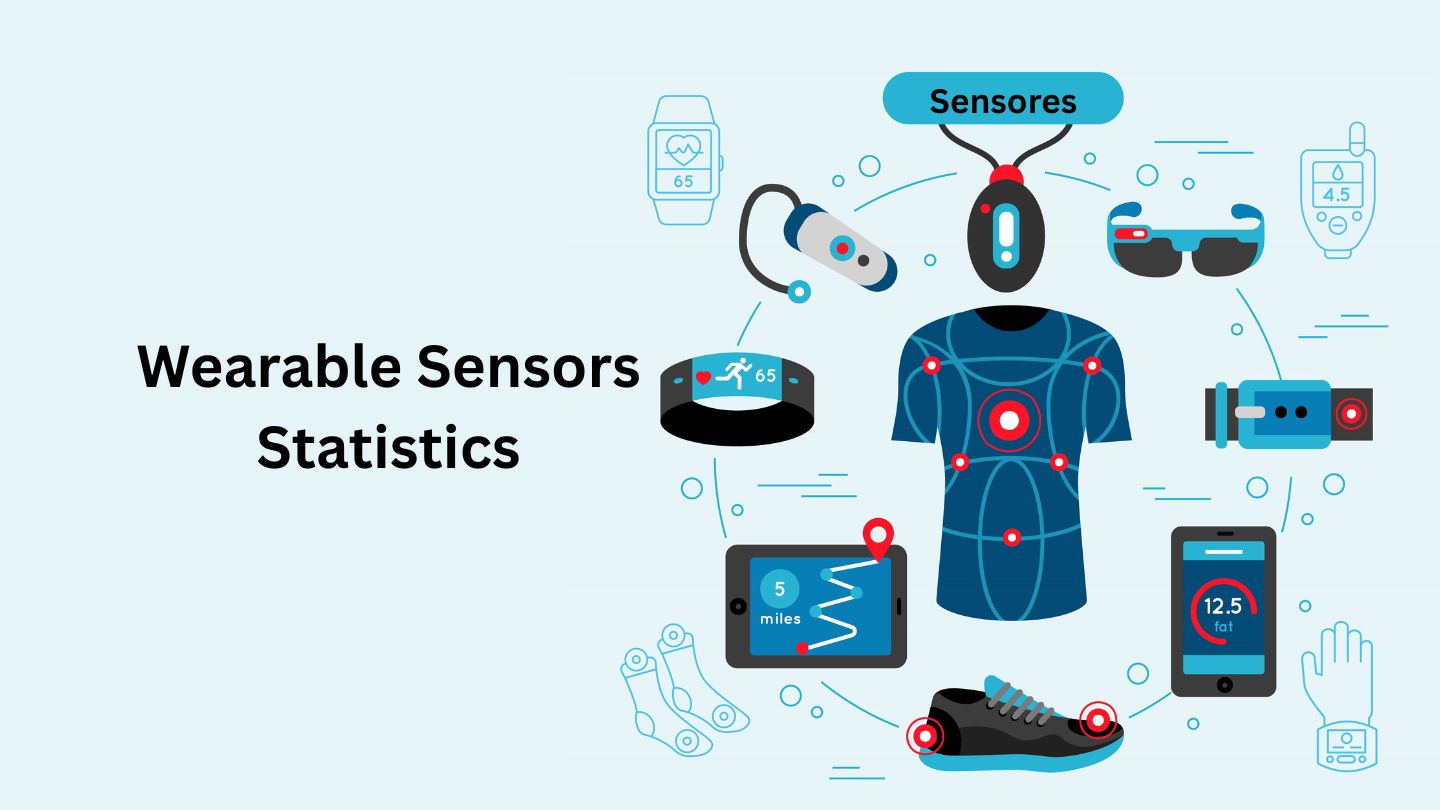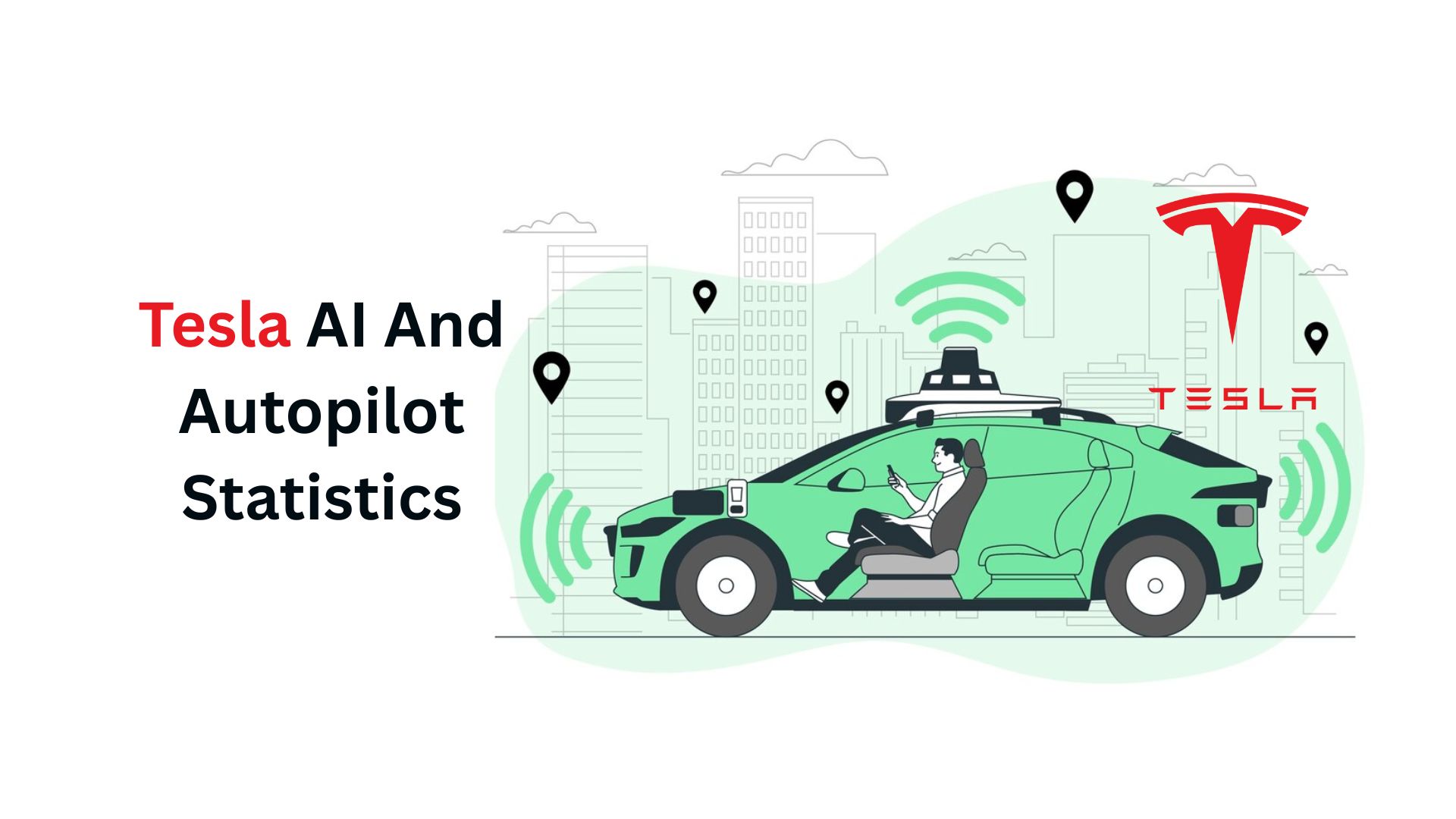Automotive Cybersecurity Statistics And Facts (2025)

Updated · Apr 22, 2025


TABLE OF CONTENTS
- Introduction
- Editor’s Choice
- What is Automotive Cybersecurity?
- Automotive Cybersecurity Statistics By Form
- Cybercrime Impact on the Automotive Companies
- Automotive Cybersecurity Regional Statistics
- Impact of Cybercrime on the Automotive Industry
- Automotive Cybersecurity Statistics By Security
- Automotive Cybersecurity Challenges
- Automotive Ransomware Attack Statistics
- Conclusion
Introduction
Automotive Cybersecurity Statistics: The automotive cybersecurity market is still new but growing fast. This growth is mainly driven by the rise of connected and self-driving cars and an increase in electronic control units (ECUS) found in electric vehicles. Many cybersecurity companies are teaming up with other key players in the auto industry to grow their global presence.
Also, cyberattacks on vehicles are becoming more common, causing big money losses for automakers (OEMS). Because of this, top car manufacturers are building their cybersecurity tools to add extra protection to their vehicles. As more connected cars are expected to hit the roads in the coming years, competition between well-known companies and new businesses in the auto cybersecurity space is likely to grow, with each trying to lead the market. We shall shed more light on Automotive Cybersecurity Statistics through this article.
Editor’s Choice
- The automotive cybersecurity market was valued at USD 3.2 billion in 2022.
- It is expected to reach around USD 22.2 billion by 2032, growing at a CAGR of 22% over the forecast period.
- About 97% of vehicle cyberattacks in recent years were carried out remotely, without needing physical access.
- Only 3% of these attacks involved direct access to the vehicle.
- In 2022, automotive suppliers were the most affected group, involved in 3% of total cyber incidents.
- As more vehicles are connected to the internet, the risk of cyber threats is growing rapidly.
- By 2025, it’s expected that over 470 million vehicles will be connected globally, raising cybersecurity concerns.
- The average cost of a cyberattack in the auto sector can go beyond USD 1.1 million per incident.
- Over 70% of carmakers are now increasing investments in cybersecurity technologies and services.
What is Automotive Cybersecurity?
Automotive security is a part of computer security that deals with cyber risks linked to modern vehicles. As more cars include wireless features and more ECUs (Electronic Control Units), the need to protect vehicles from hacking has grown quickly. This differs from automotive safety, which focuses on protecting passengers during crashes.
Car makers started using ECUs in the 1970s when cheaper microchips made it possible to build them at scale. Today, a single car can have up to 100 ECUs. These tiny computers handle tasks like turning on the wipers or running safety systems such as ABS (Anti-lock Braking System) and brake-by-wire. Self-driving technology depends heavily on advanced ECUs, sensors like radars and lidars, and control units.
Inside a vehicle, ECUs share data using both wires and wireless systems, like:
- CAN bus (Controller Area Network)
- MOST bus (Media Oriented Systems Transport)
- FlexRay (used for fast communication in cars)
- RF signals (Radio Frequency) — used in systems like TPMS (Tire Pressure Monitoring Systems)
ECUS collect signals from sensors and then act on that data. For instance, cruise control adjusts the car’s speed based on input from buttons on the steering wheel. With affordable tech like Bluetooth, Wi-Fi, LTE, and RFID, car manufacturers now add many wireless options to improve the driving experience. These include:
- Services like GM’s OnStar
- Connecting smartphones to car speakers via Bluetooth
- Systems like Apple CarPlay and Android Auto
While these features make driving easier and safer, they also open the door to cyber threats. That’s why cybersecurity for vehicles is becoming more important every year.
Automotive Cybersecurity Statistics By Form
- The automotive cybersecurity market is split into two main areas: in-vehicle and external cloud cybersecurity.
- The in-vehicle cybersecurity section is predicted to be worth over $7 billion by 2034, thanks to several important factors.
- Automotive Cybersecurity Statistics stated that one major factor is the growing use of Hardware Security Modules (HSMs) in vehicles.
- These tools create a safe space for handling encryption, storing digital keys, and processing private data securely.
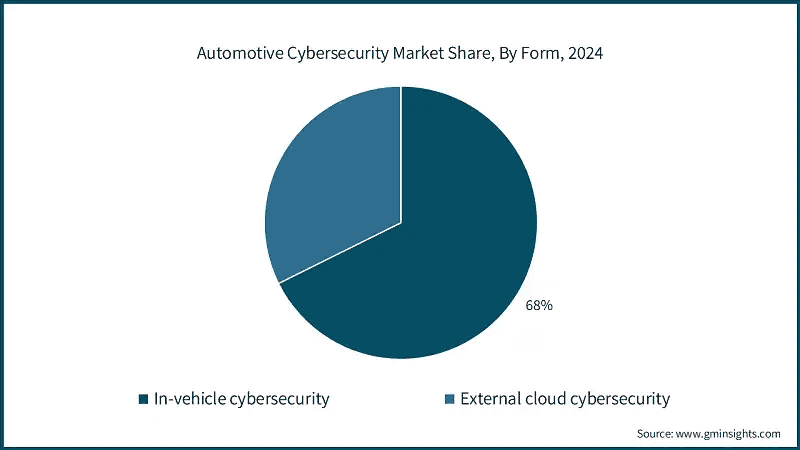
(Source: gminsights.com)
- HSMs act like trusted safety locks in cars. They protect key systems from hackers and make sure the car’s internal parts can talk to each other safely.
- This trend is growing due to the need for stronger key security and the complexity of vehicle networks.
- Automotive Cybersecurity Statistics stated that Automakers create smarter HSMs with better processing power and stronger data protection features.
- Also, carmakers now use AI-based systems to watch and protect the vehicle’s internal network.
- These systems use machine learning to learn how a vehicle normally behaves and can spot strange activity that may suggest a cyber-attack.
- Companies are now focused on building better detection tools to catch known and new threats while keeping false alarms low.
Cybercrime Impact on the Automotive Companies
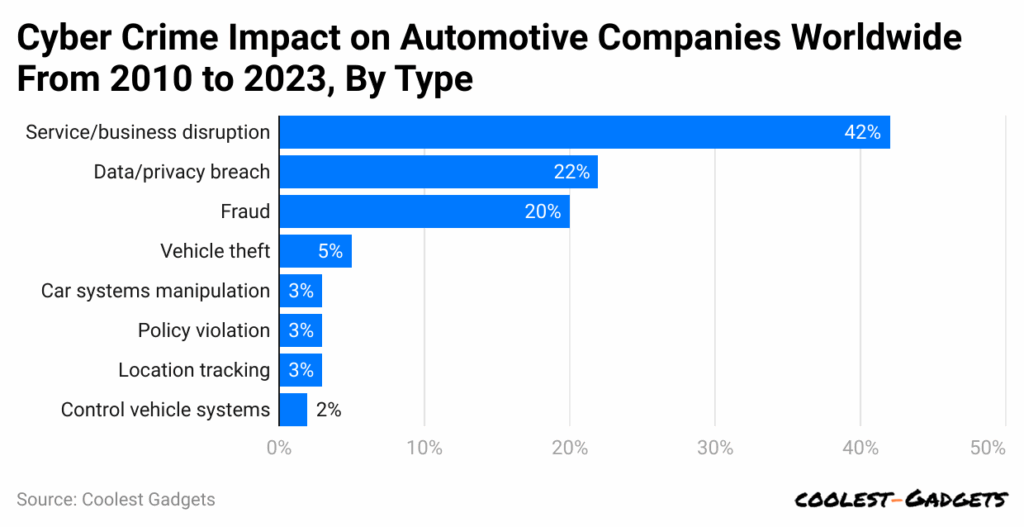
(Reference: statista.com)
- Between 2010 and 2023, the global automotive industry dealt with several cyber threats.
- The most common result was business or service interruption, such as delays or shutdowns in vehicle production, which occurred in 42% of the cases.
- The second biggest issue was data and privacy leaks, making up 22% of the total impact. Other frequent problems caused by cyberattacks include fraud and car theft.
Automotive Cybersecurity Regional Statistics
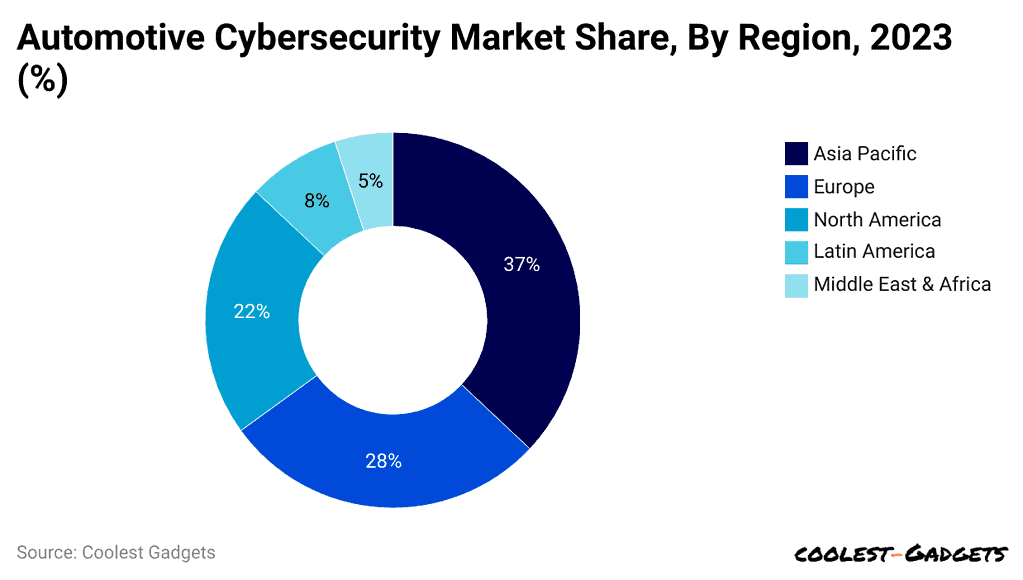
(Reference: precedenceresearch.com)
North America
- North America leads the global automotive cybersecurity market because of the growing use of connected and self-driving cars.
- These new technologies need stronger digital protection.
- The US Department of Transportation expects that by 2025, 100% of new cars sold in the US will be internet-connected.
- The region also has strict rules that support cybersecurity growth. For example, the US National Highway Traffic Safety Administration (NHTSA) has shared key cybersecurity guidelines for carmakers.
- Automotive Cybersecurity Statistics stated that about 73% of car companies in North America say that following government regulations is the main reason they invest in cybersecurity—this is the highest percentage of any region.
- 36% of all global automotive cyberattacks happened in North America, showing the urgent need for protection.
- The US also has a huge automotive market that focuses on innovation. According to the International Organisation of Motor Vehicle Manufacturers (OICA), the US built more than 6.9 million vehicles in 2020, making it one of the largest producers in the world.
- In addition, 58% of American consumers are open to paying an extra $500 for improved safety features, including cybersecurity systems.
Asia Pacific
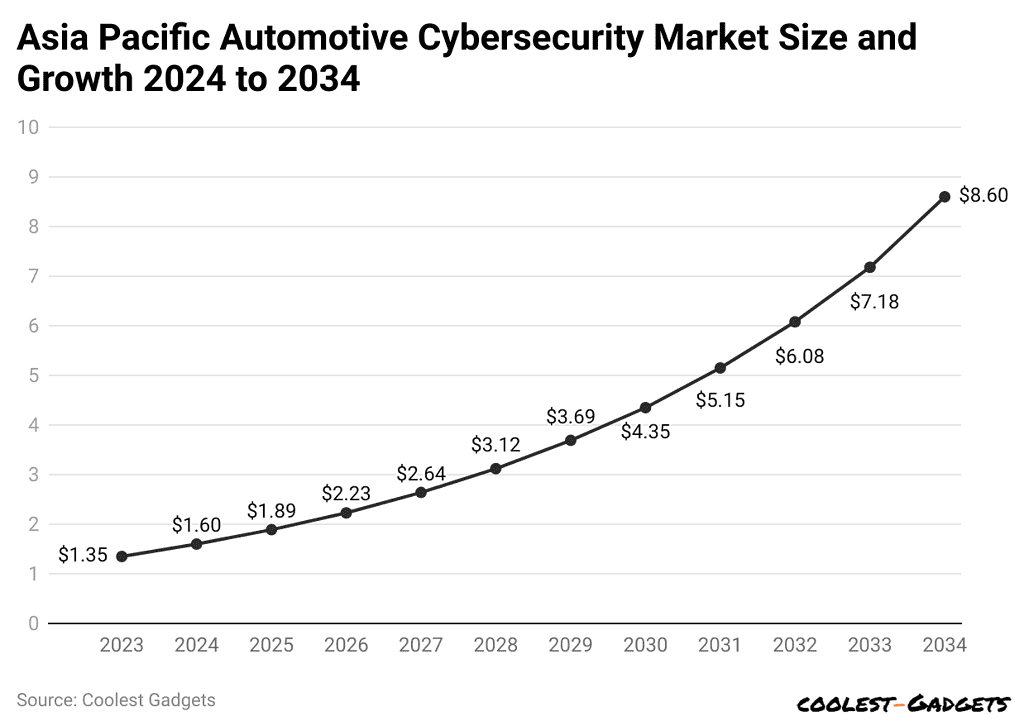
(Reference: precedenceresearch.com)
- The Asia Pacific region is the fastest-growing global automotive cybersecurity market. This growth is driven by the rise in connected cars and the need for stronger protection from cyber threats.
- By 2025, Asia Pacific is expected to have around 136 million connected cars, growing at a 20% compound annual growth rate (CAGR) from 2020 to 2025.
- In China alone, connected vehicles may reach 23.4 million units by 2025, creating major demand for automotive cybersecurity solutions.
- Governments in the Asia Pacific are also enforcing tougher cybersecurity laws. For instance, China’s Cybersecurity Law, which started in 2017, greatly influences how carmakers handle digital security.
- Automotive Cybersecurity Statistics stated that cyberattacks targeting vehicles are also rising in this region.
- Cyber threats on connected cars in Asia Pacific increased by 94%. Over the past 10 years, 19% of all global automotive cyber incidents happened here, and that share is expected to grow as more smart cars hit the road.
- Asia Pacific is home to major car manufacturing countries like China, Japan, and South Korea, which increases the need for strong cybersecurity tools.
- According to OICA, China produced over 25 million cars, making it the largest vehicle manufacturer in the world. Also, 83% of automotive executives in the region said cybersecurity is a top concern for their business, higher than the global average of 75%.
Impact of Cybercrime on the Automotive Industry
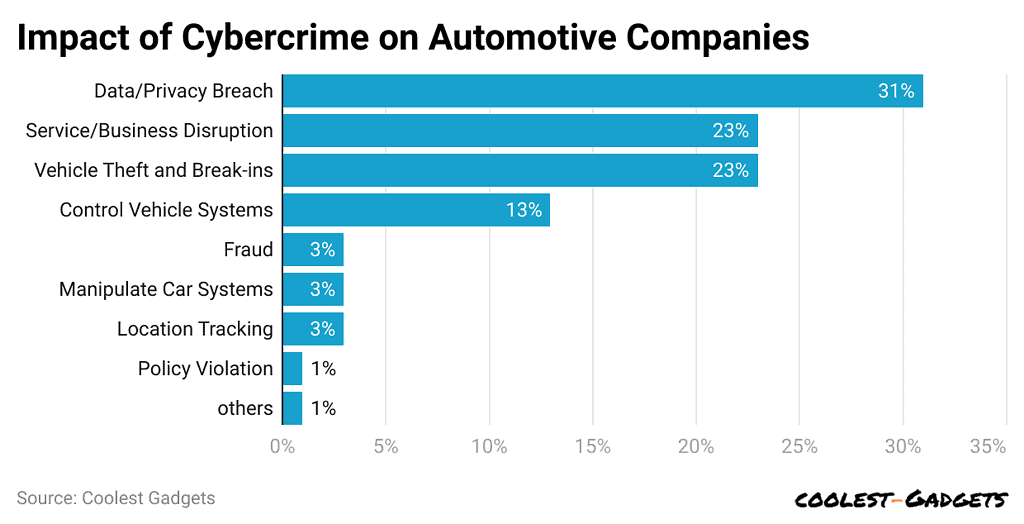
(Reference: market.us)
- Automotive Cybersecurity Statistics stated that Cybercrime caused significant damage to car companies worldwide, affecting the industry differently.
- Data and privacy breaches were the most common type of attack, accounting for 31% of all incidents.
- These breaches risked exposing sensitive information and damaging consumer trust. Service interruptions and business disruptions were another big issue, making up 23% of the incidents. These attacks caused delays and financial losses.
- Vehicle theft, break-ins, and attacks that allowed hackers to control car systems accounted for 23% of cyberattacks. These types of incidents highlight how vulnerable connected cars are to hackers.
- Other cybercrimes, including fraud, changing car systems, tracking locations, and breaking the rules, comprised 10% of the total attacks.
- This evolving threat shows the importance of strong cybersecurity measures to protect the automotive industry from various cyberattacks.
Automotive Cybersecurity Statistics By Security
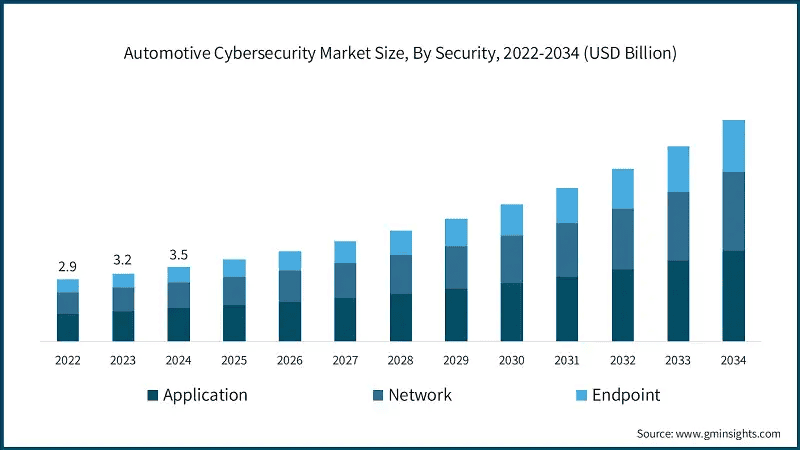
(Source: gminsights.com)
- The automotive cybersecurity market is divided into application, network, and endpoint security. In 2024, application security made up more than 45% of the market share, and it is expected to exceed $4.5 billion by 2034.
- As cars rely more on external APIs for various services, there is growing attention on protecting these APIs.
- Automotive Cybersecurity Statistics stated that important security measures for APIs include strong authentication, rate limiting, and encryption for all data exchanged.
- Automotive companies are also developing special API gateways to track and control access to vehicle systems, preventing unauthorized access and safeguarding against API-related attacks.
Automotive Cybersecurity Challenges
- Modern vehicles are getting more complicated, which makes cybersecurity harder to manage. Cars today use advanced technologies like self-driving features, the Internet of Things (IoT), and connected systems, all of which increase the chances of cyberattacks.
- For example, self-driving cars rely on sensors, cameras, and communication networks to drive safely.
- If there’s a security problem in any of these systems, it could cause serious issues, as seen in cases where researchers could hack into car systems remotely.
- As vehicles get more advanced, protecting all system parts, including in-car tech and cloud systems, becomes tougher.
- This growing risk makes it even more important for car manufacturers and cybersecurity companies to create stronger security solutions.
- Automotive Cybersecurity Statistics stated that dealing with rules and regulations is another challenge for the automotive cybersecurity market.
- Car manufacturers must follow different laws depending on the country. For example, the United Nations Economic Commission for Europe (UNECE) introduced a rule called WP.29, which says that new cars in certain regions (like Europe, Japan, and South Korea) must have strong cybersecurity measures.
- 29 also requires manufacturers to monitor and respond to cyber threats throughout the car’s life. However, since WP.29 isn’t required everywhere, companies that sell cars in other regions, like the US, have to follow different, sometimes less strict rules.
- This challenges the market because manufacturers must meet various standards, which can increase costs, make production harder, and delay new products.
Automotive Ransomware Attack Statistics
Our internal data shows that between January and mid-February 2025, reported ransomware attacks in the automotive industry have already gone above the number seen during the same time in 2024. The table below clearly shows this growing and worrying trend.
| Country/Region | Company Type | Compromise date | Ransomware operator | Impact |
| US | Rubber parts manufacturer | Feb. 17, 2025 | Cactus | 116 GB of data was stolen, including engineering and HR files |
| Netherlands | Collision repair service | Feb. 17, 2025 | Lynx | Financial and customer data exposed |
| France | Auto consulting/inspection firm | Feb. 17, 2025 | Lynx | Proprietary files and client reports exposed |
| Belarus | Auto/Motorcycle online store | Feb. 12, 2025 | Funksec | 14 GB of data leaked, customer data at risk |
| US | Freight transportation company | Feb. 12, 2025 | Medusa | 97.4 GB of data leaked, potential operational risk |
| US | Traffic engineering and planning consultant | Feb. 12, 2025 | Qilin | Internal sensitive files were leaked, and systems may have been encrypted |
| US | Automotive interior parts maker | Feb. 11, 2025 | Play | Internal documents leaked, commercial secrets at risk |
| UK | Automotive dealership group | Feb. 9, 2025 | Lynx | Potential customer and financial data exposed |
| Romania | Auto travel platform | Feb. 7 – 18, 2025 | Funksec, EraleigNews | 3 GB of data leaked; possible data resale |
| Australia | Heavy truck dealership | Feb. 5, 2025 | Lynx | 170 GB of customer and operational data at risk |
| India | Automotive consumer data | Feb. 4, 2025 | APT73 | 66,700+ car owner records leaked |
| Japan | Automotive electronics maker | Feb. 4, 2025 | Qilin | 942 GB of data with download link, potential IP leak |
| US | Recreational vehicle manufacturer | Feb. 4, 2025 | RansomHub | Potential design and customer data at risk |
| UK | Heavy vehicle tyre repair service | Feb. 4, 2025 | ROBI GOOD | Unknown impact, potential data theft |
| US | Transportation logistics carrier | Jan. 31, 2025 | Play | Data theft, internal document screenshots exposed |
| India | Automotive engineering services | Jan. 31, 2025 | Unknown | Details unknown, potential data theft or disruption |
| US | Locker supplier (indirectly auto-related) | Jan. 31, 2025 | 8BASE | 25 GB of data leaked, including invoices and HR records |
| North America | Aftermarket parts supplier | Jan. 28, 2025 | Clop | Potential inventory and customer data stolen |
| Italy | Precision measurement equipment maker | Jan. 26, 2025 | Unknown (Cryptolocker type) | Servers encrypted, logistics disrupted |
| US | Car rental service | Jan. 24, 2025 | Clop | Clop claimed an attack, but no confirmed data breach |
| Germany | Chemical supplier (auto supply chain) | Jan. 24, 2025 | Clop | US logistics server data stolen, details unclear |
| UK | Vehicle auction company | Jan. 24, 2025 | Space Bears | Financial reports and emails exposed |
| Denmark | Dealership for car OEMs | Jan. 24, 2025 | DragonForce | 86.88 GB of data leaked, employee/customer PII exposed |
| Netherlands | Dealership for car OEMs | Jan. 23, 2025 | Fog | 25.7 GB of data leaked, customer records potentially affected |
| Japan | Precision automotive parts maker | Jan. 18, 2025 | Qilin | 502.5 GB of data stolen, including R&D blueprints |
| US | Collision repair service | Jan. 16, 2025 | SafePay | Data theft, internal info accessed without authorization |
| Spain | Braking system manufacturer | Jan. 9, 2025 | Akira | 65 GB of data stolen, including NDAS and HR info |
| Sweden | Sales and service for a car OEM | Jan. 9, 2025 | ProfessorKliq | Possible 240 GB data leak, scope unclear |
| US | Driveline repair and parts supplier | Jan. 9, 2025 | RansomHub | 31 GB technical database and business data at risk |
| Nepal | Car OEM distributor | Jan. 8, 2025 | ClaratZ | Website database leaked, customer data at risk |
| Russia and CIS | Sales agent for a car OEM | Jan. 8, 2025 | Silent Crow | Customer and historical data potentially leaked |
| US | Automotive parts remanufacturer | Jan. 7, 2025 | SafePay | Financial and employee data stolen |
| Portugal | Commercial vehicle sales/rental | Jan. 1, 2025 | CiphBit | Data theft details unknown |
Conclusion
Automotive cybersecurity is becoming more important as modern cars use more smart and connected technologies. With features like self-driving systems, IoT, and cloud-based platforms, the risk of cyberattacks has increased. Data shows that most vehicle cyber incidents involve remote attacks, privacy breaches, or system shutdowns. Because of this, automakers and cybersecurity companies are putting more money into advanced protection tools like AI-powered threat detection, secure hardware modules (HSMs), and encrypted communication methods. Strict rules in areas like North America, Europe, and the Asia Pacific also push car companies to improve their cybersecurity systems.
These regulations make it necessary to follow strict security standards. Overall, protecting cars from cyber threats has become a key part of designing new vehicles, and this trend is expected to keep growing in the coming years. We have shed enough light on Automotive Cybersecurity Statistics through this article.
Sources
FAQ.
Ransomware attacks can lock a vehicle and prevent its operation, while fake GPS signals can trick drivers or help with car theft. Hacked entertainment systems can also leak personal data or spread harmful software to other connected devices.
The Automotive Cybersecurity Market was valued at around $2.79 billion in 2023. This industry is expected to reach about $3.31 billion in 2024 and grow significantly to nearly $12.9 billion by 2032. This shows a steady growth rate of 18.51% each year between 2024 and 2032.

Saisuman is a talented content writer with a keen interest in mobile tech, new gadgets, law, and science. She writes articles for websites and newsletters, conducting thorough research for medical professionals. Fluent in five languages, her love for reading and languages led her to a writing career. With a Master’s in Business Administration focusing on Human Resources, Saisuman has worked in HR and with a French international company. In her free time, she enjoys traveling and singing classical songs. At Coolest Gadgets, Saisuman reviews gadgets and analyzes their statistics, making complex information easy for readers to understand.


